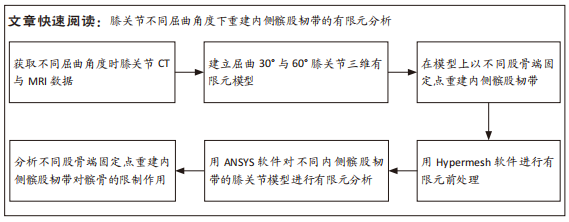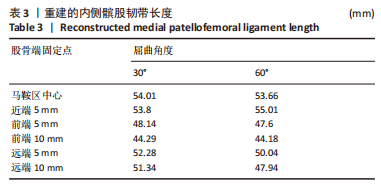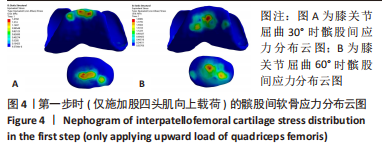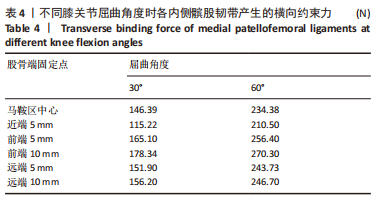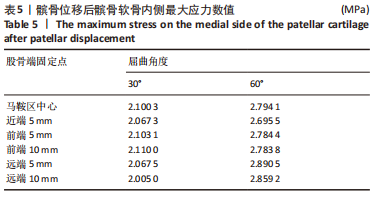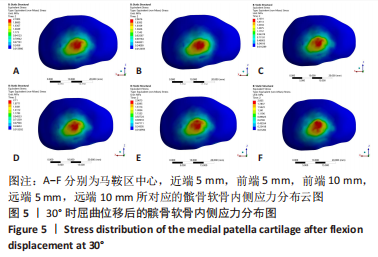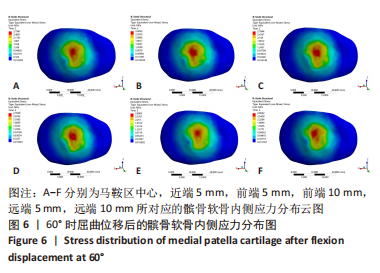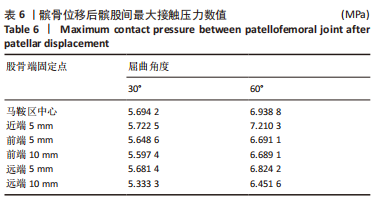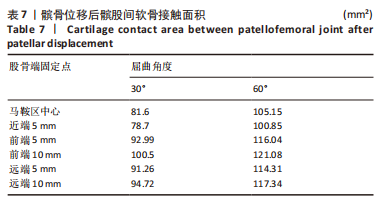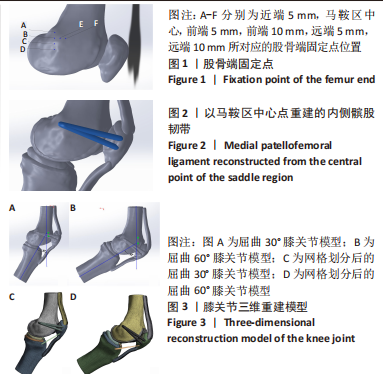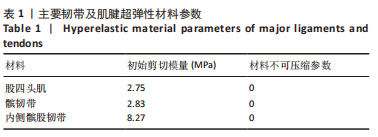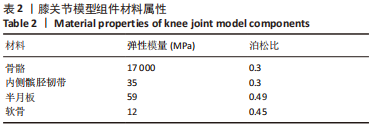[1] CLARK D, METCALFE A, WOGAN C, et al. Adolescent patellar instability: current concepts review. Bone Joint J. 2017;99-B(2):159-170.
[2] 王婧娟,那玉岩,任逸众,等.磁共振成像评估初次髌骨脱位导致内侧髌股韧带不同部位损伤与脱位复发风险关联的Meta分析[J].中国骨与关节杂志,2021,10(11):828-833.
[3] 刘丽思,袁慧书.MRI对复发性髌骨脱位内侧髌股韧带重建术疗效的评估价值[J].临床放射学杂志,2020,39(8):1592-1596.
[4] SANCHIS-ALFONSO V, GINOVART G, ALASTRUEY-LÓPEZ D, et al. Evaluation of Patellar Contact Pressure Changes after Static versus Dynamic Medial Patellofemoral Ligament Reconstructions Using a Finite Element Model. J Clin Med. 2019;8(12):2093.
[5] AFRAMIAN A, SMITH TO, TENNENT TD, et al. Origin and insertion of the medial patellofemoral ligament: a systematic review of anatomy. Knee Surg Sports Traumatol Arthrosc. 2017;25(12):3755-3772.
[6] ZHANG X, XIE G, ZHANG C, et al. Comparation and evaluation of the accuracy of the sulcus localization method to establish the medial patellofemoral ligament femoral tunnel: a cadaveric and clinical study. BMC Musculoskelet Disord. 2019;20(1):53.
[7] CHEN J, HAN K, JIANG J, et al. Radiographic Reference Points Do Not Ensure Anatomic Femoral Fixation Sites in Medial Patellofemoral Ligament Reconstruction: A Quantified Anatomic Localization Method Based on the Saddle Sulcus. Am J Sports Med. 2021;49(2):435-441.
[8] HOUDEK CG, ESQUIVEL AO, CRACCHIOLO AM, et al. A Biomechanical Comparison of Isometric and Anatomic Medial Patellofemoral Ligament Reconstruction. J Knee Surg. 2016;29(6):522-526.
[9] SANCHIS-ALFONSO V, RAMIREZ-FUENTES C, MONTESINOS-BERRY E, et al. Femoral insertion site of the graft used to replace the medial patellofemoral ligament influences the ligament dynamic changes during knee flexion and the clinical outcome. Knee Surg Sports Traumatol Arthrosc. 2017;25(8):2433-2441.
[10] DE ABREU-E-SILVA GM, BUARQUE FAR, DIAS TS, et al. Anatomical femoral tunnel positioning in the medial patellofemoral ligament reconstruction: is the free-hand technique accurate? Ann Transl Med. 2020;8(15):924.
[11] 林潮盛,刘雨微,朱伟民,等.内侧髌股韧带重建:移植物单双束选择、髌骨及股骨插入点的固定技术[J].中国组织工程研究,2021, 25(26):4217-4222.
[12] 张艳,李彦林,刘德健,等.内侧髌股韧带重建术中股骨隧道定位点研究进展[J].中国修复重建外科杂志,2021,35(2):258-264.
[13] 韩明展.自体腓骨长肌腱与半腱肌腱重建内侧髌股韧带的疗效分析[D].乌鲁木齐:新疆医科大学,2022.
[14] HINCKEL BB, GOBBI RG, DEMANGE MK, et al. Medial Patellofemoral Ligament, Medial Patellotibial Ligament, and Medial Patellomeniscal Ligament: Anatomic, Histologic, Radiographic, and Biomechanical Study. Arthroscopy. 2017;33(10):1862-1873.
[15] LAPRADE MD, KALLENBACH SL, AMAN ZS, et al. Biomechanical Evaluation of the Medial Stabilizers of the Patella. Am J Sports Med. 2018;46(7):1575-1582.
[16] MESFAR W, SHIRAZI-ADL A. Biomechanics of the knee joint in flexion under various quadriceps forces. Knee. 2005;12(6):424-434.
[17] STÄUBLI HU, SCHATZMANN L, BRUNNER P, et al. Mechanical tensile properties of the quadriceps tendon and patellar ligament in young adults. Am J Sports Med. 1999;27(1):27-34.
[18] HAUT DONAHUE TL, HOWELL SM, HULL ML, et al. A biomechanical evaluation of anterior and posterior tibialis tendons as suitable single-loop anterior cruciate ligament grafts. Arthroscopy. 2002;18(6):589-597.
[19] 葛永军,宣勇,穆帅,等.膝关节盘状半月板有限元模型的构建及生物力学分析[J].中国矫形外科杂志,2019,27(22):2071-2075.
[20] 张吉超,董万鹏,董跃福,等.膝关节有限元模型参数设置[J].中国组织工程研究,2021,25(30):4781-4786.
[21] BLACK SR, MEYERS KN, NGUYEN JT, et al. Comparison of Ligament Isometry and Patellofemoral Contact Pressures for Medial Patellofemoral Ligament Reconstruction Techniques in Skeletally Immature Patients. Am J Sports Med. 2020;48(14):3557-3565.
[22] FITZPATRICK CK, BALDWIN MA, RULLKOETTER PJ. Computationally efficient finite element evaluation of natural patellofemoral mechanics. J Biomech Eng. 2010;132(12):121013.
[23] SMITH MK, WERNER BC, DIDUCH DR. Avoiding Complications with MPFL Reconstruction. Curr Rev Musculoskelet Med. 2018;11(2):241-252.
[24] PÉREZ-PRIETO D, CAPURRO B, GELBER PE, et al. The anatomy and isometry of a quasi-anatomical reconstruction of the medial patellofemoral ligament. Knee Surg Sports Traumatol Arthrosc. 2017; 25(8):2420-2423.
[25] 刘敏,蔡春元,杨国敬,等.MPFL重建术中股骨隧道定位对移植物等距特性的影响[J].医用生物力学,2010,25(5):385-388.
[26] 白玉龙,范振华,陈世益.髌股关节接触面及应力分布的研究[J].中国运动医学杂志,1992(4):222-225.
[27] 辛雨佳.髌下脂肪垫切除对股关节压力影响的有限元分析[D].呼和浩特:内蒙古医科大学,2020.
[28] 郑雷,都基权,朱玲玲,等.分析比较急性髌骨外侧脱位与膝关节多发韧带损伤后内侧髌股韧带损伤的特点[J].武警医学,2021,32(7): 568-572.
[29] 胡俊娇,林琦婷,汪飞,等.髌骨一过性外侧脱位MRI表现[J].中国医学影像技术,2020,36(6):945-947.
[30] DEVRIES WATSON NA, DUCHMAN KR, et al. A Finite Element Analysis of Medial Patellofemoral Ligament Reconstruction. Iowa Orthop J. 2015;35:13-19.
[31] DUCHMAN KR, DEVRIES NA, MCCARTHY MA, et al. Biomechanical evaluation of medial patellofemoral ligament reconstruction. Iowa Orthop J. 2013;33:64-69.
[32] TANAKA MJ, CHAHLA J, FARR J 2ND, et al. Recognition of evolving medial patellofemoral anatomy provides insight for reconstruction. Knee Surg Sports Traumatol Arthrosc. 2019;27(8):2537-2550.
[33] PATEL NK, DE SA D, VASWANI R, et al. Knee Flexion Angle During Graft Fixation for Medial Patellofemoral Ligament Reconstruction: A Systematic Review of Outcomes and Complications. Arthroscopy. 2019;35(6):1893-1904.
|
